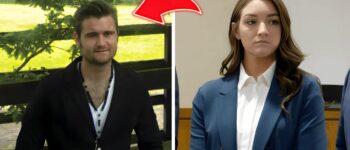
In October 1970, a malnourished and frail young girl, later known as Genie, shuffled into a welfare office in Los Angeles County. Her entrance was accidental—her mother, nearly blind from cataracts, had entered the wrong office while seeking services for the visually impaired. But as welfare staff caught sight of Genie, they couldn’t help but stare. She moved in a peculiar way, holding her hands in front of her like a rabbit, and her appearance was hauntingly childlike. Initial guesses placed her age at six or seven, but it was soon revealed that she was, in fact, 13 years old.
The welfare officers, disturbed by her state, suspected autism. Yet as they observed further, they realised her case was far more severe. She could not speak, could barely chew or swallow, and was incontinent. With two nearly complete sets of teeth, known as “supernumeraries” due to a rare dental condition, she weighed a mere 59 pounds (26 kg) and struggled to fully extend her limbs. This young girl had suffered extensive, unimaginable abuse.

A Life Imprisoned: The Horrors of Genie’s Childhood
Genie, as she was called to protect her identity, had endured a childhood of extreme isolation and abuse at the hands of her father, Clark Wiley. Raised in foster care himself, Clark grew up in unstable conditions in the Pacific Northwest before working as a machinist in Los Angeles. He harboured deep-seated control issues and an aversion to noise, qualities that he imposed with terrifying effect on his family. Clark did not want children, but he had four with his wife, Irene. Tragically, he left his firstborn in an unheated garage where the child died, and his second child, a boy, succumbed to birth complications.

Clark’s strict control grew worse after his mother was killed in a car accident in 1958. Unravelling into anger and paranoia, he became more violent, fixating his cruelty on his daughter, Genie. At just 20 months old, she was confined to a single room, often bound in a type of straitjacket, strapped to a chair, or left in a crib covered in wire mesh. Her father enforced a strict rule of silence, forbidding her from making any noise and beating her with a plank of wood if she disobeyed. She was rarely, if ever, allowed to interact with her family or the outside world. Clark instilled fear by growling outside her door like a guard dog, fostering a lifelong fear of animals in Genie. The isolation, abuse, and sensory deprivation she endured through the 1960s left her physically and mentally stunted.
The Moment of Rescue and the Fallout of Abuse
It wasn’t until 1970 that Genie’s mother, finally overcoming her fear, managed to escape with her. They wandered into the welfare office, inadvertently placing Genie on a path that would lead to both salvation and suffering. Welfare officers quickly filed an abuse report, and her father was subsequently charged with child abuse. Facing trial, Clark took his own life, leaving behind a note reading, “The world will never understand.”

For Genie, a new chapter began at LA Children’s Hospital, where she was placed in the care of medical professionals. She was dubbed “the most profoundly damaged child they had ever seen,” and her case quickly attracted attention from scientists. As a child who had grown up in silence, she represented a unique opportunity for linguists and psychologists to explore questions about human development, language acquisition, and resilience in the face of isolation.
Genie and the “Critical Period Hypothesis”
Genie’s arrival at the hospital ignited intense interest, particularly from linguists eager to test the “critical period hypothesis,” which posits that there is a window during early childhood when the brain is most receptive to learning language. This theory, proposed by researchers such as Eric Lenneberg, suggests that if language acquisition does not occur before a certain age, it becomes increasingly difficult or even impossible.
Genie’s case would put this theory to the test. Although she had an intense curiosity about her surroundings and quickly learned to recognise some words, she struggled to form sentences. She could say isolated words like “blue,” “orange,” “mother,” and “go,” but her speech lacked grammatical structure. Researchers noted her intelligence in other areas: she could arrange pictures into coherent stories, build complex structures from sticks, and interact meaningfully through non-verbal cues. Susan Curtiss, a linguist at UCLA who worked closely with Genie, observed, “She was smart… The lights were on.”
Curtiss noted that Genie’s thought processes were never verbally encoded, offering insight into the relationship between thought and language. “Does language make us human? That’s a tough question,” Curtiss said. “It’s possible to know very little language and still be fully human, to love, form relationships, and engage with the world. Genie definitely engaged with the world.”

As she learned more language, she gradually began to speak about her father and his treatment of her in greater detail.
Father hit arm. Big wood. Genie cry … Not spit. Father. Hit face—spit. Father hit big stick. Father is angry. Father hit Genie big stick. Father take piece wood hit. Cry. Father make me cry. Father is dead.
The Ethical Dilemmas: Experimenting on a “Feral Child”
The arrival of Genie at the Children’s Hospital ushered in four years of intensive study funded by the National Institute of Mental Health. Researchers observed her behaviours, documented her progress, and tested her abilities with a focus on language development and emotional responses. Genie’s situation, however, soon became ethically complex.

One of her caregivers, a teacher named Jean Butler, brought Genie into her home under the premise of aiding her social development. Butler observed fascinating behaviours, like Genie’s penchant for collecting containers and her intense curiosity. However, Butler’s decision to isolate Genie from other researchers led to conflicts within the team, raising accusations of exploitation. Tensions reached a breaking point as Butler sought custody, prompting accusations of wanting to become “the next Anne Sullivan” to Genie’s Helen Keller.
In the end, Genie moved into the home of David Rigler, another researcher, who, along with his wife, seemed to provide a supportive environment. This period marked some of Genie’s happiest times, as she explored the world around her, forging a unique, if fragile, connection with her caregivers and with people in her community. However, as the funding for her case study ended in 1975, she was again uprooted and placed in foster care, an environment far less suited to her needs.
An End to the Study, and an Ongoing Tragedy
The environment in Genie’s new placement was extremely rigid and gave her far less access to her favourite objects and activities, and her caretakers rarely allowed her mother to visit. Soon after she moved in they began to subject her to extreme physical and emotional abuse, resulting in both incontinence and constipation resurfacing and causing her to revert to her coping mechanism of silence.

The incident with the strongest impact occurred when they severely beat her for vomiting and told her that if she did it again, they would never let her see her mother, making her terrified of opening her mouth for fear of vomiting and facing more beatings. This made her extremely frightened of eating or speaking, and she became extremely withdrawn and almost exclusively relied on sign language for communication.
Irene, her mother, briefly regained custody in 1978 but struggled to care for her daughter. By the early 1980s, Genie was placed in a series of state-run institutions, where visits and contact were restricted. This abrupt end to her support shattered much of her fragile progress, leaving her, in Curtiss’s words, “withdrawn” and “her soul sick.”
In 1993, journalist Russ Rymer recounted visiting Genie on her 27th birthday, describing her as “a large, bumbling woman with a facial expression of cowlike incomprehension.” Her once-bright potential was dimmed, and her condition left even her most ardent supporters feeling helpless. Psychiatrist Jay Shurley, another key figure, described his sorrow, saying, “She was this isolated person… she emerged and lived in a more reasonable world for a while, and then the door was shut.”

Genie’s Legacy and Lingering Questions
While Genie’s case added to our understanding of language development, her story has largely faded from public view. Some reports suggest that she remains in an assisted living facility in Los Angeles, though her precise location and condition are unknown. For Susan Curtiss and others who were close to her, the lack of contact has been a source of anguish. “I’ve spent the last 20 years looking for her,” Curtiss said in 2008. “I can get as far as the social worker in charge of her case, but I can’t get any farther.”
Genie’s life poses haunting questions about the obligations of society to protect its most vulnerable. It underscores the dark complexities surrounding scientific study and ethical responsibility, especially when subjects are as vulnerable as Genie was. Her case remains one of the most poignant and ethically challenging episodes in psychological and linguistic research, revealing both the potential for resilience and the devastating consequences of exploitation.



Leave a Reply